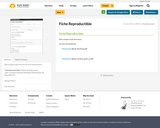
Mon compte rendu de lecture
Un livre extraordinaire
- Subject:
- French
- Language Education
- Material Type:
- Activity/Lab
- Date Added:
- 10/01/2018
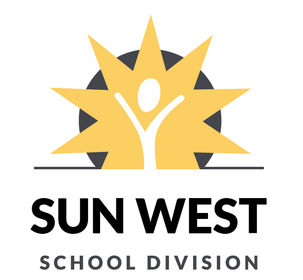
Sun West endorsed resources.
Sun West endorsed resources.

Mon compte rendu de lecture
Un livre extraordinaire
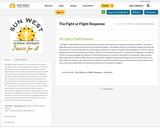
The Fight or Flight Response is an automatic brain response your body has to a perceived dangerous situation. The Fight or Flight Response’s purpose is to protect you from potential danger. The problem, is that it is a primitive response and often the world we live in now does not have the same dangerous situations as when this response first developed in our brains. We no longer have the threat of wild animals, however, the threat of writing a test or exam, or handing in an assignment, or speaking in front of a group of people still continues to illicit the same physical reaction in our brain for some people. When a person feels threatened, the fight-or-flight response is automatically triggered, and the body changes that occur still prepares us to either ‘fight’ the threat, or ‘flee’ the threat (even though it is impractical to ‘flee’ from an assignment) the brain response is the same as if it was a wild animal. The resource includes what it is and how to manage it.

Figure This! Math Problem Solving Challenge for Families
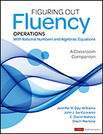
This site offers 4 free math activities to assist students with increasing their fluency in operations with rational number and algebraic equations. The activities include:
Activity 7.7: "Would You Rather..." Routine
There are two versions of this routine with systems of linear equations—choosing different strategies (e.g., Use Tables or Use Graphs) and making choices within a strategy (e.g., For which variable will I substitute? Or Which variables will I eliminate?).
Activity 6.10: The Transformer Game
This game is a fun way to give students opportunities to choose and use different basic transformations to start solving equations.
Activity 5.7: Worked Examples For Ratios and Proportions
Use this activity for worked examples for ratios and proportions. Correctly worked examples and partially solved worked examples benefit students so that they can understand strategy.
ACTIVITY 4.11: Quotient Connect Game
This game is an engaging way to practice division using Partial Quotients. It is played similarly to the classic board game Boggle as students find quotients through connected digits.

Today we’re going to look at how our computers read and interpret computer files. We’ll talk about how some popular file formats like txt, wave, and bitmap are encoded and decoded giving us pretty pictures and lifelike recordings from just strings of 1’s and 0’s, and we’ll discuss how our computers are able to keep all this data organized and readily accessible to users. You’ll notice in this episode that we’re starting to talk more about computer users, not programmers, foreshadowing where the series will be going in a few episodes.

Discover Saskatchewan—from its big cities and rural areas to its small towns and remote communities—through a selection of films that shines a spotlight on the province’s hidden treasures and fascinating characters. Suitable for both primary and secondary level students, this playlist includes animated and documentary films. These seminal works from our collection address the topics that matter most, ranging from historical subjects to the most pressing issues of the day.
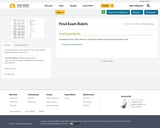
Knowledge of Topic, Effort, Research, Vitals Signs, Medical Questioning, Body Systems, Test
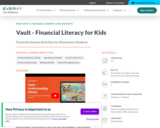
Vault is an interactive, online learning course specifically designed to teach financial education skills to young learners. Using the latest in new-media technologies and evidence-based learning, Vault brings complex financial concepts to life for today’s digital generation. With lessons on fiscal responsibility, money management, credit and borrowing, savings and more, Vault increase students’ basic financial literacy and builds the foundation of healthy financial decision-making at a young age.
Grades 4 to 6
This Course Covers
Responsible Money Choices
Income and Careers
Planning & Money Management
Credit & Borrowing
Insurance & Safety Management
Savings & Investing
Related Topics
K-12 Educators

"We are already hard at work finalizing our promotional material, such as web banners, articles and infographics to help you promote FLM in your community. These materials will become available on the Financial Literacy Month web page in October. We invite you to bookmark this page and visit it regularly for updates on FLM."
Themes:
*Budgeting
*Borrowing
*Financial Goals
*Being a Smart Consumer

These calendars from Everfi are filled with digital and offline lessons and activities to teach financial literacy! Grades 3-6; Grades 6-9 & Grades 9-12 are available.
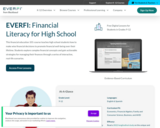
Financial literacy is an important aspect of everyday life. EVERFI’s Financial Literacy online resource engages users through video, animations and interactive activities to bring complex financial concepts to life, empowering students to better manage their personal finances. The program includes 9 modules on a variety of topics, including Savings, Banking, Credit Cards & Interest Rates, Credit Scores, Financing Higher Education, Renting vs. Owning, Taxes & Insurance, Consumer Protection, and Investing, giving students the tools they’ll need to successfully manage their financial future.
This Course Covers
EVERFI Financial Literacy
Savings
Credit Scores & Reports
Funding Higher Education
Renting vs Owning
Insurance & Taxes
Consumer Protection
Investing
Banking Basics
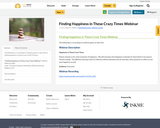
The following is a collection of Happiness Webinars given during school closures on how we can find happiness in these crazy times!

This activity can be used to help find the main idea or keyword from a passage of text. This activity is excellent to develop vocabulary and deepen understanding of the content being examined.

Ideas for improving fine motor skills in Pre-K/ Preschool children.

We touch things every day: a coffee cup, a car door, a computer keyboard. Each time we do, it is likely that we leave behind our unique signature—in our fingerprints.
No two people have exactly the same fingerprints. Even identical twins, with identical DNA, have different fingerprints. This uniqueness allows fingerprints to be used in all sorts of ways, including for background checks, biometric security, mass disaster identification, and of course, in criminal situations.
Fingerprint analysis has been used to identify suspects and solve crimes for more than 100 years, and it remains an extremely valuable tool for law enforcement. One of the most important uses for fingerprints is to help investigators link one crime scene to another involving the same person. Fingerprint identification also helps investigators to track a criminal’s record, their previous arrests and convictions, to aid in sentencing, probation, parole and pardoning decisions.

Each person in the world has a set of fingerprints unique to them! Even though every print is different, they can be categorized into one of three general types:
-loops (found in 65% of the population)
-whorls (found in 35% of the population)
-arches (found in 5% of the population)
Analyzing fingerprints can be a tricky business, especially without computers to help. After categorizing a print as a loop, whorl, or arch, look for these individual features:
-core: in a loop fingerprint, this is the center of the loop.
-delta: in loop and whorl patterns, this is an area where ridges meet from three directions. (There is usually one delta on a loop and two or more on a whorl.
-ridge end: notice where individual ridges come to an end.
-bifurcation: notice where a ridge divides into two ridges (like a fork in a road)
-island: notice any short ridges cut off from others.
-crossover: notice where any ridges appear to cross over each other.
Try your hand at fingerprint analysis! Two different fingerprints have been found at a crime scene. Compare them to the fingerprints of the 4 suspects on this website.
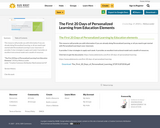
This resource will provide you with information if you are already doing Personalized Learning, or all you need to get started with Personalized Learning in your classroom.
It provides 5 clear strategies to apply each week. It provides an excellent instructional model and a wealth of resources.

Helping children learn to be smart about feelings can help alleviate their emotional stress, improve concentration, boost their immune system, and enhance brain development. This First Aid for Feelings workbook for children was designed to help do that. By using the simple coping strategies found in this workbook, you can encourage children to express thoughts, questions, and feelings. These life skills may help reduce and manage children’s stress or anxiety, and provide some sense of control within their changing lives.

The “Planting the Seed” series is produced by the Atlantic Policy Congress of First Nation Chiefs and the Elders Advisory Committee.
The “Planting the Seed Series” is sharing and teaching about First Nation culture. The tree represents a symbol of life and began as a seed. As the seed gets nourished the more it will flourish. Like the tree of life, a person will also flourish when cultural nourishment is given. It helps to grow the individual, family, community and nation. The sharing of this information helps to plant the seed that leads to a life long journey of learning. Sharing - The First Nation Way.
Categories to learn about:
- Sacred medicines
- Medicine circle
- Medicine pouch
- Naming ceremony
- Fasting
- Sunset and sunrise ceremony
- Talking circle
- Moon time
- Regalia
- Medicine bundle
- Dream catcher
- Drum
- Sacred pipe
- Sacred fire
- Pow-wow
- Eagle
- Sweatlodge
- Songs
- Dance
- Elder

This First Nations Circle was shared by Elder Gladys Wapass-Greyeyes, 2014.